A classic Boilermaker used to be a not-so-elegant beer cocktail recipe where a shot of whiskey got dunked into a beer glass. Meanwhile, this old no-frills approach is outdated. Today, a Boilermaker drink comes in two separate glasses. One shot glass of fine whiskey, along with a glass of ice-cold beer.
There's no general rule on what you should combine. Yet, pairing bourbon or rye whiskey with a beer has almost evolved into a piece of science. There are techniques you can apply to get the best out of the combination. Things that are also valid when pairing food and other alcoholic drinks like wine, for example.
Let's dive into the topic and find out what the Boilermaker drink is made of, how it was invented, how you can get the best Boilermaker pairings, and how to drink a Boilermaker the right way.
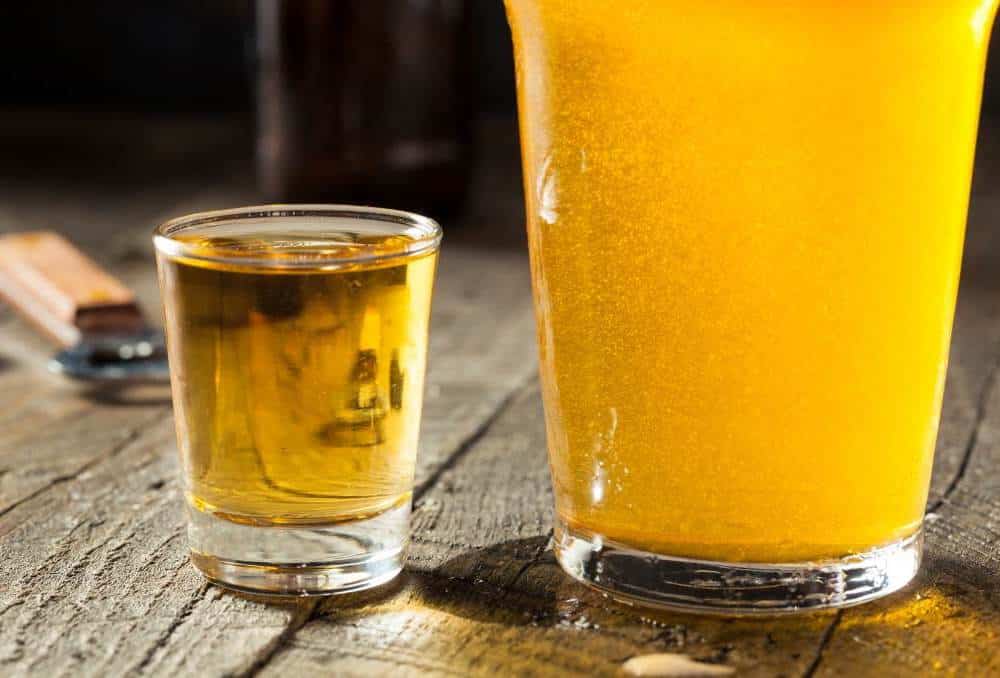
The Boilermaker drink recipe includes one shot of hard liquor and a pint of beer. In most cases, that means a shot of whiskey paired with a matching beer. It can be any type of whiskey like bourbon, rye, Scotch, or Irish whiskey.
However, there are similar combinations of beer and shots with a long tradition in Europe. One is the "Herrengedeck" (Engl. "Gentleman's menu"), a German creation consisting of a glass of beer and a shot of Korn.
Another example is the Dutch "Kopstootje". This combination of beer and Genever translates to "little headbutt" and most likely refers to the headaches you will feel the morning after.
You can find plenty of stories about how the classic cocktail came to its name, but there's a general lack of agreement on any of these tales. The Oxford English Dictionary says the term "boilermaker" was first used to refer to the craftsmen who built and maintained steam locomotives. While that makes sense, we still need a bridge to the drink's name. To not leave you in the dark, here are the two most popular versions of the drinks' creation.
During the 1800s, a boilermaker was someone who earned his money by making and maintaining steam locomotives. -A laborious and challenging way to earn a living.
After long days of work, the boilermakers relieved their pain by drinking a shot of whiskey and a glass of beer. And because this was such a regular serving for boilermakers, it was soon named after them.
The second story also involves a steam locomotive but in an entirely different way. Richard Trevithick created his own steam locomotive in 1801 and tested it on Christmas Eve of the same year.
When his creation passed the taste, he celebrated the feat with some of his friends by ordering whiskey and beers.
Unfortunately, he forgot to put the fire out before heading to the pub. When he returned to his locomotive, it was burned to ashes. It was all blamed on the consumption of whiskey and beer, and so the Boilermaker was born.
Regardless of whether any of these stories are true or which one you prefer, today's Boilermaker discussion is all about finding the best pairings.

The Boilermaker cocktail recipe is simple, but it's all about finding the perfect match between whiskey and a specific beer chaser. Of course, that's all a matter of personal preference, but there are multiple ways to approach this topic scientifically.
After all, there are not only different whiskey styles but also several types of beer, from lager, stout, and ale, to fancy craft beer. Whatever your favorite beer and whiskey is, there are three ways to choose a pair: complementing, contrasting, or cutting through.
Here's a short guide that helps explain what these terms actually mean.
When trying to find complementing matches, choose pairs that share similar characteristics. The goal is the emphasize dominant flavors and aromas. For a Boilermaker, this could mean pairing a smoky Scotch Whisky with a pint of smoky porter.
Choosing contrasting elements brings together two very different profiles to create something unique and complex. A good example of this is mixing sweet with sour. Everyone had this combination before, either with food or in a cocktail; -think of a classic Whiskey Sour.
Translated to a Boilermaker, a sweet bourbon, and a Stout beer would be a prime example of a contrasting pair.
The cutting technique allows for muting down a dominant flavor by combining it with something that cuts through it. In food pairings, the combination of blue cheese and fruit is an example of how you can cut through a very dominant flavor profile.
A combination of bourbon and Wheat beer is a fantastic example of that. Wheat beers are light and easy-to-drink beers. Paired with bourbon, the Wheat beer cuts through the rich corn sweetness in bourbon.

Carefully positioning a shot of whiskey inside a beer glass is a thing of the past. -As is the more rustic approach of dumping your shot glass in the beer. Even drinking the whiskey in one go and then chasing it with beer is more or less outdated.
The modern way to drink a Boilermaker, especially in high-class cocktail bars, is more of a back-and-forth approach. That makes sense, considering how much effort goes into finding the perfect match. You don't want to ruin your Boilermaker in one gulp.
You can make delicious Boilermakers with all kinds of hard liquor, not only whiskey. Flavorful aged spirits like Cognac or rum are excellent spirits to pair with beer, too. Here are our recommendations for creating a Boilermaker drink without whiskey:
Last but not least, here are three pairing recommendations. And if you want some more inspiration, head over to the best whiskey and beer combinations in a boilermaker.
For more pairing recommendations, check out our list of the best Boilermakers.
The selection of non-alcoholic whiskey is getting bigger each year. That also accounts for other no-alcohol spirits, but it feels like the situation with whiskey is different. The reviews online are more emotional, and the critiques are harsher.
Many bloggers, reviewers, and spirits experts claim these bottles are too sweet, have too much caramel, are too expensive, and simply are no real whiskey alternative. The unanimous verdict: there's no worthy non-alcoholic whiskey alternative doing the trick.
The truth is, that the category of alcohol-free spirit is still young. Brands have come a long way in the past few years, and the products improved a lot. But it's also true that brands still have a long way ahead to create products that adequately substitute alcoholic drinks.
In this expert guide, we will answer your questions and shed some light on non-alcoholic whiskey. We answer all the common questions like: What is a non-alcoholic whiskey? How does it taste? How is it made? And which non-alcoholic whiskey is best for making classic cocktail recipes without alcohol?
Taste | What is it? | How it is made | What is it Made of? | Is it 100% alcohol-free | Is it worth it? | Popular brands
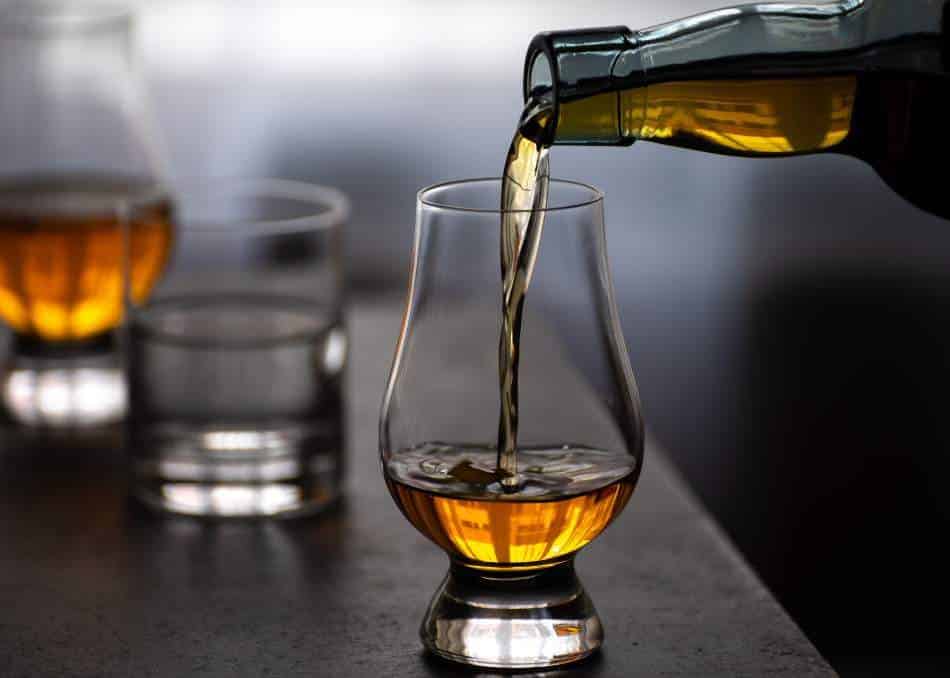
In General, non-alcoholic whiskey has a sweet taste, often with distinct caramel and vanilla flavors. Some brands also impart additional flavors to replicate specific whiskey types, like spice (rye) and smoke (Scotch). The main problem with whiskey alternatives is that they lack texture, which makes the mouthfeel way different from real whiskey. Alcohol gives texture to drinks, and until today, there's no way to replicate it.
A regular whiskey contains at least 40% alcohol, and as ethanol has a lower boiling point and lighter density than water, it feels and behaves very differently.
In general, these non-alcoholic drinks are not meant for sipping. Despite all efforts, the taste is not even close to real whiskey, except when using it with other ingredients.
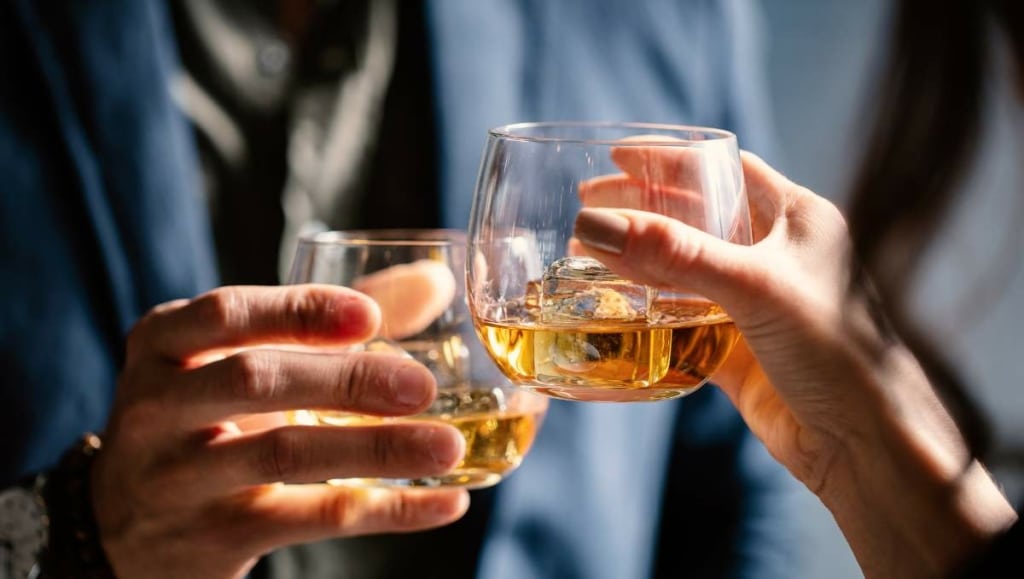
Non-alcoholic whiskey is an alternative to regular, alcoholic whiskey made entirely without alcohol. The beverage is ideal for people who can't, or don't want to, drink alcohol and is an excellent ingredient for Mocktails. However, the substitute is not meant for sipping, as the taste is too far off.
No alcohol whiskey comes in various colors, tastes, and styles that try to mimic specific types of whiskey, such as rye, bourbon, or scotch. It can be used in alcohol-free versions of classic whiskey cocktails like an Old Fashioned by replacing bourbon as the base and using non-alcoholic bitters instead of classic Angostura bitters.
There are two different ways of making non-alcoholic whiskey. The first one uses only natural ingredients and follows the traditional way of making an alcoholic whiskey, but removes the alcohol using a reverse distillation process. The reverse distillation process removes all alcohol from a whiskey while keeping the flavors.
The second way is a lab approach where producers blend various ingredients, aromas, and other additives to achieve a product that resembles whiskey.
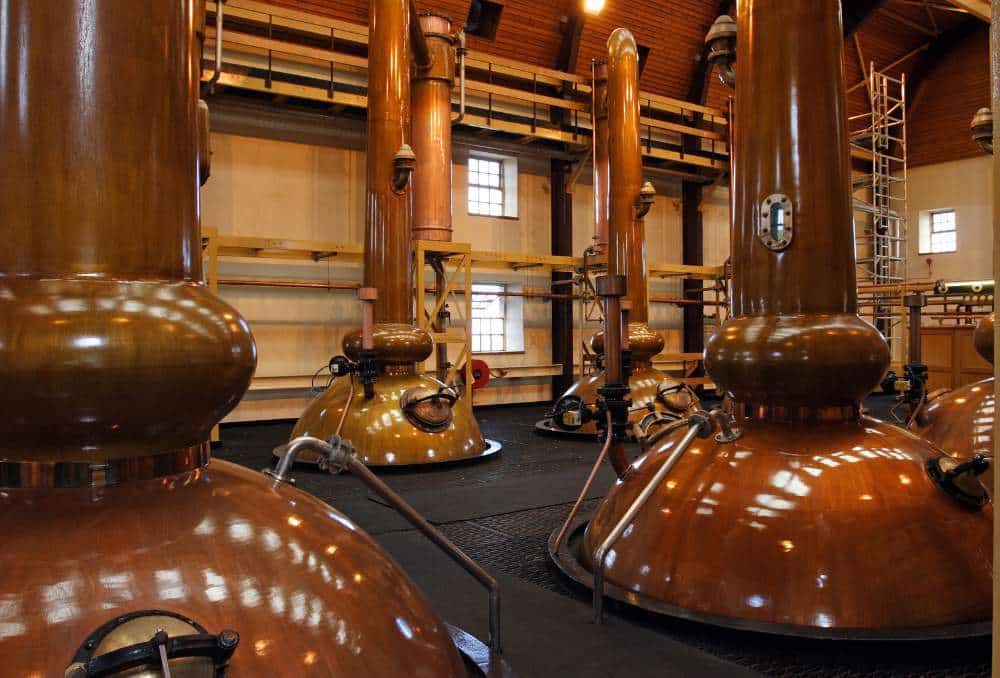
Depending on how a specific product is made, the ingredients may vary. All of them are based on filtered or spring water, natural flavors, Potassium Sorbate, and Sodium Benzoate. Potassium sorbate is a common preservative found in many drinks and foods, while Sodium Benzoate is added due to the lack of alcohol. It inhibits the growth of bacteria, yeasts, and molds, making the non-alcoholic alternatives shelf-stable.
Especially lab-produced products will contain various flavor extracts, citric acid, several juices, caramel, and other natural colorings to obtain the desired taste and color.
It depends on the production process, but all non-alcoholic whiskeys contain 0.5% alcohol or less. With the conventional way of removing alcohol from a distillate, traces of alcohol will remain in the end product.
The same applies to alcohol-free beer or sometimes even fruit juices. Because legally, you can label any product alcohol-free once it has below 0.5% ABV.
If you look at manufacturers making imitations of conventional Whiskey, you will find many who developed 100% ethanol-free products. These innovative alcohol alternatives only mimic the characteristics of Whiskey, like texture, complexity, smell, and flavor profile. In turn, they are able to produce without a single drop of alcohol.
If you can not, or don't want to, drink alcohol, these alcohol-free alternatives are very much worth it. Especially when consuming them in combination with other ingredients, like ginger ale, soda water, and lemon juice.
Seasoned whiskey drinkers looking for an occasional alcohol-free dram, won't be satisfied. The flavors do not come close to the real deal, and the price is too high considering you can drink any alcoholic whiskey instead.
Due to its molecular structure, alcohol has distinct characteristics in terms of flavor and texture. You cannot achieve these when leaving it off. At least, that's the status quo. The future might prove otherwise.
But saying that, drinking it in mocktails is a great alternative to boozy cocktails. It will get some of the known whiskey flavors through, plus you have an adult drink without the side effects of alcohol.
The trend of non-alcoholic whiskey started in the mid-2010s with Arkay and Seedlip, and since then, become a product category of its own. These no alcohol spirits, just like alcohol-free gin, tequila, and other products, can be seen everywhere.
Two of the big players with a massive marketing machine behind them are Lyre's and Ritual Zero Proof Whiskey alternative. They have been on the market since 2019/2020 and quickly became well-known non-alcoholic spirit brands.
Here is a quick overview of the best no alcohol whiskeys you can get at the moment:
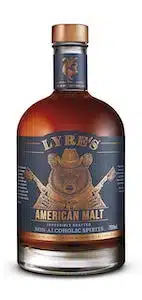
Lyre's American Malt is a non-alcoholic spirit that aims to replicate the flavors of traditional American malt whiskey. It offers a flavor profile characterized by sweet brown sugar, caramel, cherry, raisin, and subtle woodiness, ending with a light peppery finish.
This beverage is low in calories, with just 64 calories per serving, and has an ABV of 0.0%. While it might not capture the depth of traditional whiskey, it can be used in low-abv cocktails or alcohol-free Mocktails. Lyre's also produces an alternative to Scotch called Lyre’s Highland Malt.

The Spirit Of Bourbon is a non-alcoholic alternative crafted by the Free Spirits Company. Using Distillate Reconstruction, it replicates bourbon flavor without the alcohol. It can be enjoyed neat, on the rocks, or in mixed drinks.
The aroma combines brown sugar, vanilla, and butterscotch notes. Neat, the drink offers a mellow taste with hints of oak, malt, and molasses. When served with ice, it becomes spicier but loses some flavor. However, we recommend using it in mocktails like alcohol-free Whiskey Sour.

Spiritless Kentucky 47 is a unique non-alcoholic bourbon. Unlike many other alcohol-free spirits, it starts with a real high-proof spirit, mixed with oak chips and staves to mimic the barrel aging process. They then use a "reverse distillation" method to remove almost all the alcohol while preserving the flavors.
It looks and smells like bourbon, with a deep amber color and oaky aromas. The taste, however, surprises with tangy citrus notes, ginger, oak, and hints of cherry and warm spices. It works beautifully in cocktails, especially in an Old Fashioned or a whiskey-based mule, offering a rich and complex flavor profile. While not recommended neat, it's a fantastic choice for mixing delightful alcohol-free drinks to wake up the next day without a hangover.
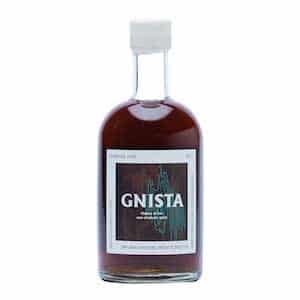
Swedish company Gnista made a delicious non-alcoholic drink that tastes like bourbon but without the alcohol. It's called Barreled Oak.
The aroma of sweet wood mixed with earthy stuff is quite pleasant. When you take a sip, you get smoky, woody flavors with a bit of sweetness and a bit of bitterness, like chocolate, raisins, and spices.
This drink is not for rushing; it's for enjoying slowly. You can drink it straight, on ice, or mixed with club soda for a grown-up fizzy drink.

Monday whiskey is produced in small batches in sunny Southern California. In the realm of non-alcoholic spirits, Drink Monday stands out with its commitment to crafting all-natural, zero-calorie, and zero-sugar alternatives. Their "whiskey" offers a unique tasting experience, featuring notes of dark chocolate, zesty lemon, and cayenne-like spices.
While it doesn't perfectly mimic traditional whiskey, it shines as a standalone product for crafting mocktails. Plus, Monday takes pride in being keto, vegan, and containing no gluten in their products.
For more recommendations, look at our list of the top non-alcoholic bourbon whiskeys to try.
Jim Beam vs. Jack Daniel's - both are giants in the American whiskey market and have a seemingly indestructible fanbase all across the globe. But have you ever wondered what the differences between those two are? If so, let us help. We will show where those two famous whiskeys differ.
In a nutshell, the differences between Jim Beam vs. Jack Daniels lie in type and taste. Jim Beam is a classic bourbon, whereas Jack Daniels is a Tennessee Whiskey. That also shows in the flavor profile, Jim Beam has a much more bourbon-like taste with warm flavors like honey, oak, and spices paired with earthy, fruity, and herbal notes. Jack Daniel's is significantly thinner and more alcoholic in taste with a focus on sweetness, banana, oak, and cinnamon.
However, that is not where the differences stop. We compare the regions where the whiskeys come from, the various versions, their bottling proof, their reputation, and much more. If you're looking for a thorough comparison between Jim Beam and Jack Daniel's or want to purchase either one as a gift, you've come to the right place.
Here is our comprehensive breakdown of two of the biggest whiskey producers in the United States.

Jack Daniel's and Jim Beam are both corn-forward, sweet whiskeys but significantly different in taste, style, price, and origin. Let's look at the main differences between the two whiskey brands in this quick summary of Jim Beam vs. Jack Daniel's.
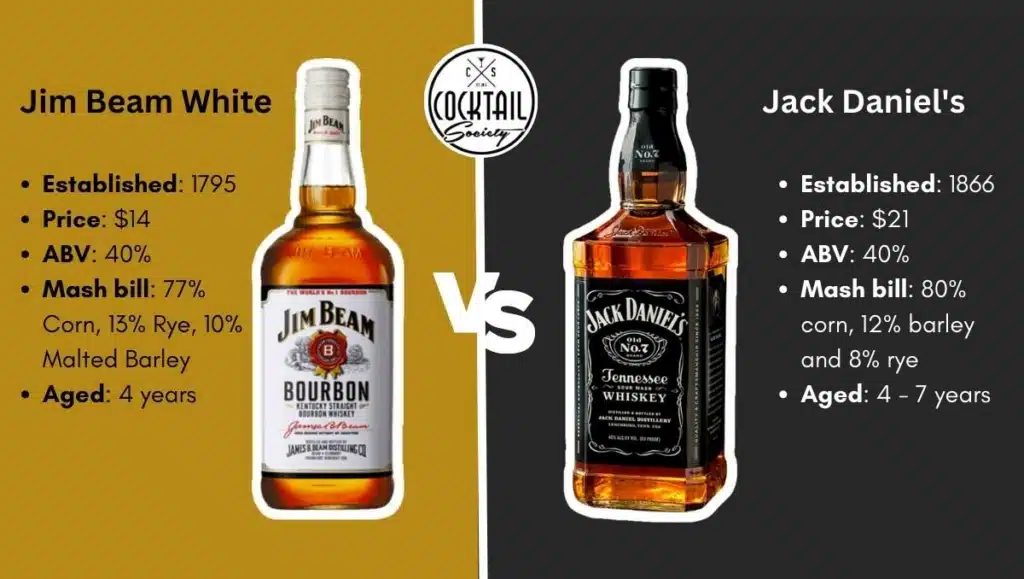

One of the most significant differences between Jack Daniels vs. Jim Beam is the flavor profile. Overall, the balance of flavors in Jim Beam is much better than in Jack Daniel's. The Tennessee whiskey, with its signature taste, has much stronger alcoholic notes and also more sugar, and a thinner consistency.
Both whiskeys have a corn-forward mash bill that differs only slightly. However, Jack Daniel's uses a slightly higher amount of corn (80%) and has barley as a secondary ingredient (12%). Jim Beam, on the other hand, uses 77% of corn and only 10% of malted barley.
Both whiskeys have a loyal customer base and tend to be in the low-price segment. Jim Beam, however, is significantly cheaper and can usually be had for as little as $14. A bottle of Jack Daniel's costs about $20.
Both whiskeys, Jim Beam White and Jack Daniel's age for at least four years in oak barrels. However, on average, Jack Daniel's ages slightly longer. Typically, the Tennessee Whiskey matures for 4-7 years until it reaches the desired taste, color, and quality.
The brand Jim Beam was established in 1795. -And what many people do not know, is that the first Jim Beam distillery was not founded by a family actually named Beam.
Instead, the founder of the bourbon whiskey brand was a German called Johannes Boehm. However, in an attempt to make his name more English-friendly, he changed his name to the more Anglo-American version Beam.
And another widely unknown fact is that the whiskey's name was not Jim Beam right away. Initially, it was named “Old Tub.” It took until 1943 to rebrand it to Jim Beam, to honor not only the family but especially Colonel James B. Beam, who sadly passed only a few years later.
Jim Beam bourbon was managed and produced by the Beam family for seven generations. But in 2014, Jim Beam was sold to a Japanese group called Suntory, most famous for their Japanese Whisky. And Suntory has more to offer. It is a gigantic privately-held company owning many different spirits brands. And by acquiring Jim Beam for $13,6 billion, the portfolio became even more enormous.
Jack Daniel's was invented in Tennessee by Jasper Newton Daniel, a local lay preacher and moonshine distiller better known as Jack. Jack Daniel's became the first recognized distillery in the United States in 1866.
The brand is world-famous for its Tennessee Whiskey made from sour mash. The US government recognized the term Tennessee Whiskey as a specific type of whiskey in 1941. Therefore, the spirit is neither rye nor bourbon and is not required to follow the guidelines for these types of spirits.
Jack Daniel's invented its very own distillation process. Plus, the brand managed to have the method recognized as a distinct variety. However, technically, Jack Daniel's still remains bourbon, and the North American Free Trade Agreement lists it as a straight bourbon, as well.
Nevertheless, representatives and spokespersons of Jack Daniel's keep claiming it is not bourbon. In private, though, they probably would admit that their product does indeed tick all the boxes for being categorized as bourbon.
After the distillation, Jack Daniel's Tennessee Whiskey undergoes a special procedure called the ‘Lincoln County Process.’ It means, for six days, the whiskey drips in large vats through specifically made charcoal. This charcoal is obtained from burned maple wood and impregnated with high-proof Jack Daniel's Whiskey (140 proof).
Then, the whiskey matures in new and charred oak barrels for approximately 4 to 7 years before being bottled at 40% ABV. -At least since 2004. Before that, the famous Tennessee Whiskey had an ABV of 43%.

Starting with only one product in 1795, Jim Beam today offers a whole variety of products. Check out the options of Jim Beam that are available at the moment.
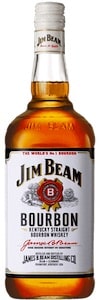
Jim Beam White Label is a solid budget Bourbon. It's a decent entry-level option for people new to Bourbon, as the affordable price and the low ABV make it pretty approachable. However, considering the weak taste, there are better options for just a few dollars more.
The nose with its notes of corn and light fruitness is typical for a Bourbon. And the usual Bourbon flavors of oak and vanilla can be found, too. But overall, this spirit lacks complexity and has harsh alcohol notes even though it is only 80 proof.
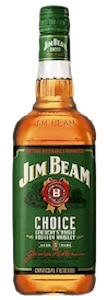
Green Label is aged a bit longer than the classic White Label offering. Also, it's much smoother and more complex than the standard bottling of Jim Beam. The smell shows notes of caramel, vanilla, and hints of pepper, and on the palate, you get more vanilla notes, port, and subtle spice.
Altogether this spirit is not overly complex but a great everyday Bourbon. But the increased quality comes along with a higher price point.
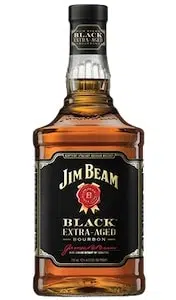
Jim Beam Black label's smell is intriguing. Light oaky notes mix with aromas of candied apples and vanilla custard. The taste is way less complex, though. The Bourbon is comparably thin in taste with strong notes of oak.
Apart from the oaky notes, you can also taste some typical vanilla and caramel. And even though it certainly doesn't taste bad, the flavor profile is just a bit more one-dimensional than the nose suggests. The finish has more oak, vanilla, and pepper. Plus, a smokiness that lingers for quite a while.
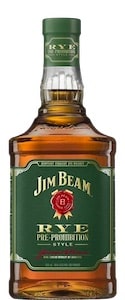
Don't be fooled by the "Pre-Prohibition" on the bottle label. Jim Beam Rye - Pre-Prohibition style actually tastes like a regular Rye Whiskey. The nose is a little sweet and reminds a bit of Old Overholt's Rye. Notes of caramel, butterscotch, and toffee dominate the aroma.
On the palate, it's a different story. You can taste (raw) grains, vanilla, and spice. But just like some of the other Jim Beam products, the spirit lacks complexity and follows simpler flavor profiles.
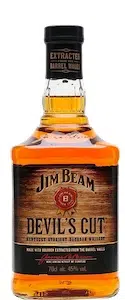
The Devil's Cut has a deep caramel-colored spirit dominated by a wooden aroma. Hidden behind that, you can also taste caramel, toffee, and dark fruit. For some, the strongly pronounced wooden notes might be too much. I also find it a bit overwhelming, even though the taste of wood is the whole point of this expression.
On the palate, the wood is less pronounced. You get strong caramel notes and hints of spices like cinnamon. It's a beautiful fit for people who are into wood-forward spirits. For everyone else, this might not be an ideal choice.

The Distiller's Masterpiece is aged for an extended time. However, Jim Beam doesn't say for how long exactly. What we do know is that its deep reddish-brown color is coming from an additional aging step in ex-Pedro Ximenez sherry casks.
As you would expect at this price point, the aromas and flavors of this premium Bourbon are complex. The nose shows spicy notes with dark fruit, cinnamon, nuts, and sweet caramel. On the palate, you clearly can taste the sherry coming from the sherry cask aging. You can also taste dark fruit, spice, marmalade, and even cocoa.
Overall, this is a beautiful whiskey. Considering the steep price point (now), I would choose another Bourbon, though.
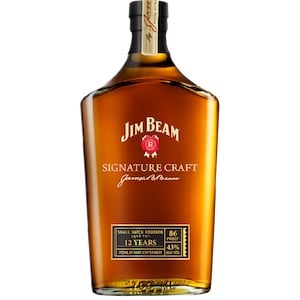
Bottled and released in 2015, this premium Bourbon from Jim Beam is barrel-aged for 12 years. This extended time in the barrel helped this Jim Beam expression. The small-batch release is full-bodied with a comparably complex flavor profile.
The nose is typical with notes of cinnamon, vanilla, and oak. On the palate, you get a slightly more complex profile. Caramel, vanilla, spicy cinnamon, and oak dominate the taste.

The Signature Quarter Cask by Jim Beam is best enjoyed neat, and I recommend adding neither ice nor water to it. The dilution changes the flavor balance, but not for the better, and you end up with less sweet corn and more spice and oak.
The price is a bit hefty, but still, this Bourbon is a good choice. -Especially if you prefer a dry, oaky, and vanilla-forward Bourbon. If you are an avid fan of the brand, this bottle is almost a must-have. If not, it is still a nice addition to your whiskey collection. Should you be uncertain about it, go ahead and test it in a whiskey bar first before purchasing a whole bottle.

Jim Beam Single Barrel is a highly unusual release from the famous whiskey brand. While most of their releases are quite similar in flavor profile, this one stands out. You can smell a bit of ethanol, but besides that, the spirit is intriguing, complex, and simply a great whiskey to sip.
The nose is full of apples, rye, vanilla, and a hint of ethanol. Once you sip it, the ethanol is completely gone, though. Instead, you get a balanced mix of caramel, rye spice, and oak. The finish is sweet, with more vanilla and caramel.
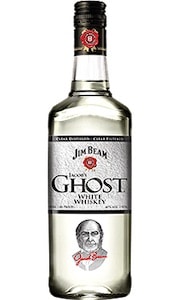
Considering its price point and the fact that it is a large volume white whiskey (white means that the spirit aged for a very short amount of time), Jacob's Ghost is a good option. It is creamy and smooth with floral notes and hints of vanilla. It also has a slightly smoky taste to it.
And compared to other white whiskeys in that price range, Jacob's Ghost performs quite well. The smooth and creamy taste makes it better than most competitors in that range.
The lineup of Jack Daniel's might not be as expansive as the one from Jim Beam, but they still have a considerable selection. So let's check out what the distillery from Tennessee has to offer.

I already described the flavors and aromas of the standard Jack Daniel's bottling above. And this release is no exception: it's a solid whiskey with sweet and fruity aromas and flavors. The finish is relatively dry and takes away from the otherwise beautiful flavor profile.

Jack Daniel's Tennessee Rye is just as solid as its standard bottling. But, considering the higher price point, one might expect a bit more from it. The nose is slightly spicier than that of sour mash Tennessee Whiskey. But it still has fruity notes of banana and some oaky notes.
The flavors on the palate are similar, with a touch more sweetness to them. Notes of marshmallow mingle with spice notes, banana, oak, and some char. It certainly is a great Rye for Jack Daniel's fans as it holds some of the typical flavors you know from the Old No. 7.

The Single Barrel Select clearly builds on the base of their iconic No. 7. You get some similar notes in the nose of banana or banana bread, caramel, and toasted oak.
The palate shows more notes of caramel, together with dried banana and oak. -A restrained but elegant flavor profile with just a trace of ethanol. And although bottled at 94 proof, the spirit actually doesn't feel strong. In a blind tasting, I might have estimated it at 80 proof.
The finish also is pretty straightforward: a hint of spicy pepper complements the more pronounced charred oak and sweet brown sugar notes.

Jack Daniel's Single Barrel Rye comes at a steep price point. Especially because the spirit has no official age statement and, frankly, the company doesn't have much experience producing quality Rye Whiskey. However, the result is quite promising and certainly an above-average Rye.
The nose has fruity notes of cherry and banana complemented by hints of spice, vanilla, and oak. In the beginning, the palate feels quite one-dimensional. Lots of banana notes mixed with cherry and caramel. Later on, you get more oak and typical Rye spices.
Overall, it's a rather fruit-forward and unusual Rye Whiskey at a relatively high price point. But when looking for something new and extraordinary to try, it isn't the worst option.
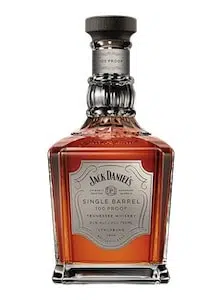
Jack Daniel's Single Barrel 100 Proof is rich and creamy with a flavor of corn, caramel, and banana. And it was my favorite amongst their Single Barrel offerings until the Barrel Proof (see below) was released. Especially on the palate, it really benefits from the higher ABV.
The full-bodied whiskey is dominated by rich vanilla and oak notes and carries a delicate underlying trace of cherry and wood. Only in the back of your throat can you taste some bitter notes that bring the experience down a little. Overall, it's an aromatic spirit with a decent depth of flavor.

Bottled at full proof directly from the barrel, this Jack Daniel's is a powerhouse when it comes to richness and taste. Already on smelling it, you're greeted by a bold variety of aromas: Sweet caramel, fresh banana, banana bread, cherries, apples, vanilla, cinnamon, and also woody hints of oak.
And the palate delivers what the nose is promising. It is a bold and rich whiskey. The sweetness of caramel, honey, and banana mixes with vanilla, oak, cinnamon, and nutty notes.
Due to a high ABV of 64%, the spirit has quite a bite to it, but not in an unpleasant way. Actually, it is my favorite whiskey from Jack Daniel's.

First released in 1988, Gentleman's Jack is much more mellow than the standard release. The reason is that the whiskey is undergoing the charcoal mellowing process twice before aging. To make it even smoother, it's mellowed once again before finally getting bottled at 40% ABV.
Gentleman Jack has a super smooth texture and is really easy to sip. The flavor profile is simple yet well-balanced, with just the right balance between caramel, oak, and vanilla. But the smoothness comes at a price.
Also, for seasoned whiskey and Bourbon drinkers, Gentleman Jack might be a bit boring. If you're new to whiskey in general, it's an excellent choice to get used to the flavors without being overwhelmed by complex flavors and harsh alcohol notes.
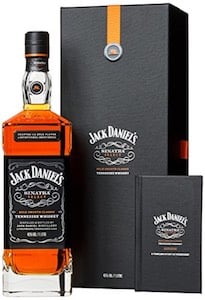
The Sinatra Select release is a pricy bottle of whiskey mostly meant for fans of either Jack Daniel's or Franky. Its nose is strong and fruity with notes of apple, mango, and orange, but there are also some more classic aromas like vanilla, buttercream, and wood.
On the palate, it is a tad bit rough. That isn't bad, but I would have expected a better balance. It holds notes of nut, caramel, vanilla, oak, cinnamon, and orange. The mouthfeel itself is pretty nice and rich. It almost feels like its a 100 proof.
Overall the Sinatra Select is nothing really new. It has some upsides and downsides without being unique. And to be honest, spending 100$ on this is most likely not worth it. Considering that currently, it sells for as much as $150, I do not recommend buying a bottle unless you're a big fan of either brand or artist.
Besides the whiskey listed above, Jack Daniels also released some flavored, lower ABV liqueurs. To not leave them unmentioned, here are their other products:
Jim Beam and Jack Daniel's are the two best-selling whiskey brands worldwide. The statistic from The Spirits Business ranked Jim Beam as #1, selling 17 million cases in 2021, closely followed by Jack Daniel's with 13.5 million. Suntory Kakubin, Jameson, and Crown Royal follow behind.
The biggest market for Jim Beam is, of course, the US. But also in Europe, especially in Germany and Australia, the Kentucky Bourbon sells very well. The main reason for this is the value you get for your money. You receive a decent quality whiskey with quite a small price tag.
Jack Daniel's sells the majority of its bottles in the US. The strongest export markets are India, UK, and France - in that order.
Both products work great in Highballs and cocktails. However, in my honest opinion, Jim Beam is easier to use in cocktail recipes due to its classic bourbon-y flavor profile. Jack Daniel's, on the other hand, is not always a great fit in bourbon drink recipes. The untypical sweetness and alcoholic bite make it a bit harder to balance.
Here are some drinks to make with Jim Beam:
And here is a selection of cocktails that you can mix with Jack Daniel's:
Jim Beam and Jack Daniel's are two of the most famous whiskey brands worldwide. Jim Beam is a bourbon, and Jack Daniel's officially is classified as Tennessee Whiskey. Technically, though, both products are bourbon whiskey even though Jack Daniel's undergoes some special treatment.
Both brands have a raving fanbase, and choosing between Jim Beam and Jack Daniel's is a matter of personal preference. Both standard releases are not exactly what I call a perfect choice for sipping, but great spirits for beginners. If I had to pick a favorite from all releases, I would opt for Jack Daniel's Single Barrel Barrel Proof.
The Whiskey Sour is a classic from the sour cocktails category. All cocktails for this category share the same basic template: A spirit base mixed with fresh lemon or lime juice and simple syrup.
Summary Top Whiskey in Whiskey Sour:
The beauty of the drink is, that you can tailor it to your liking by picking a whiskey that suits your taste. By choosing the right one, you can lift this cocktail from good to outstanding.
We put together this list of the best whiskeys for Whiskey Sour, including recommendations for whom they are suited best, to help you make your next Sour cocktail perfect.
Most Whiskey Sour recipes use bourbon as base spirit. However, we also included some excellent rye whiskey, Irish whiskeys, and even Scotch that work great in the cocktail.

Woodford's Reserve Bourbon is the first and truly a great fit. This bourbon is so smooth and rich that it works perfectly in many cocktails.
The taste is relatively mild and not too overpowering. That makes it a perfect base for an elegant and perfectly-balanced Whiskey Sour.
Woodford Reserve is a standard medium-bodied whiskey with vanilla and honey notes. When sipped neat, it might be a bit too weak. Yet, it is that mildness that complements the other components of your Whiskey Sour so well.
Its sweet notes match perfectly with the acidity of lemon juice and create a rich and tasty cocktail.

Elijah Craig Small Batch is the second bourbon on our list but results in a very different drink. In contrast to the mild and balanced Woodford Reserve, this bourbon is rich with cinnamon and wood spice notes. It also has the distinct sweetness the corn-spirit is known for, yet it's not overly pronounced.
Elijah Craig is bottled at 47% ABV and has an excellent balance of flavors and aromas. The bold flavor profile ensures you can still taste the base spirit even when used in a Whiskey Sour. Plus, the balance here is so good that you can easily forget it clocks in at a whopping 94 proof.
I recommend using an egg white when opting for this whiskey for your base. That will help balance the different flavors by adding creaminess to your cocktail.
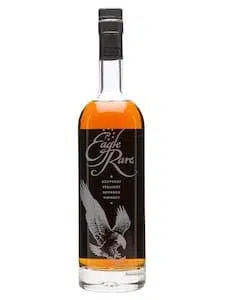
Eagle Rare Bourbon is distilled at the Buffalo Trace Distillery. The name might ring a bell with Bourbon lovers because Buffalo Trace produces some of the top Bourbons, such as Blanton's.
Eagle Rare itself is super smooth and carefully crafted. When drunk neat, you can detect flavors like coffee, leather, and underlying hints of oak.
Eagle Rare is perfect for a Whiskey Sour as it combines the strengths of the above two Bourbons.
It is mild, well-balanced, and mixes perfectly with lemon juice and syrup. But it's also strong enough in taste to cut through the acidity of the lemon and stand out.

Bulleit is better known for their bourbon expression produced at its facilities in Kentucky. However, their rye whiskey makes for an excellent Whiskey Sour and deserves a place on this list.
They outsourced the production for their Rye to MGP (Midwest Grain Products) in Indiana, which seems to work brilliantly for them. Bulleit Rye Whiskey is a beautiful spirit that works great in cocktails.
Aged for a minimum of five years, Bulleit Rye carries hints of vanilla, citrus, and oak. It is a milder and sweeter take on rye whiskey, making it approachable to non-Rye drinkers.
When used in a Sour Cocktail, Bulleit Rye is between bourbon and classic rye. Give this unusual base spirit a try, and you'll most certainly be positively surprised by its compatibility with cocktails. -Consider adding a tad less syrup to your Whiskey Sour than you normally would.
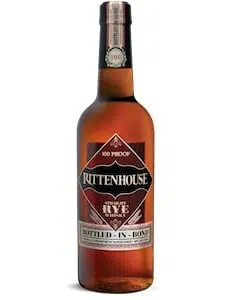
Rittenhouse Rye is a product of Heaven Hill. -The company behind Elijah Craig Bourbon and Evan Williams.
Despite its low price point, Rittenhouse is a favorite among Rye lovers. The high ABV combined with the beautiful spice makes Rittenhouse one of the best Rye options for a Whiskey Sour.
Its intense notes of caramel and cocoa blend well with spices like cinnamon, vanilla, and nutmeg. This boozy rye whiskey is strong enough to remain the undisputed star of the show when mixed with lemon juice and syrup.
This rye is a beautiful choice for anyone who loves their Whiskey Sour more on the dry side.

Wild Turkey 101 is another high-ABV Rye from Kentucky. Like Rittenhouse, Wild Turkey is a pretty spicy representative of its kind - even a little spicier, in fact.
The taste of Wild Turkey 101 is bold, with pronounced notes of rye and wood spice. The hint of smoke and an overall warmth tame the bite of this intense rye whiskey.
In a Whiskey Sour, the spiciness of this rye stands up strong against the acidic lemon juice and sweet sugar syrup. The result is a smooth, distinct cocktail with quite a bite.
It is a perfect choice if you want to make a spicier Whiskey Sour, but not so great if you prefer the drinks on the sweeter side.
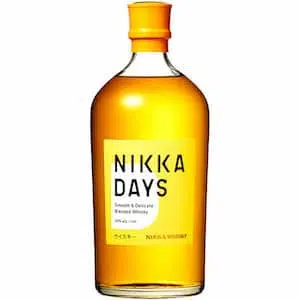
Nikka is one of the most influential whisky producers in Japan, with a long tradition of producing exquisite whiskies.
Nikka Days also knows how to impress discerned whiskies drinkers. The whisky has a bright, floral, and fruity flavor profile combined with a surprisingly high level of smoke.
Nikka Days is a smooth and creamy spirit, perfect for sipping neat or on the rocks. But when used in cocktails, it shows its full potential.
For all fans of smokey drinks, Nikka is an excellent base in a Whiskey Sour recipe. -Even though it's not from Scotland.
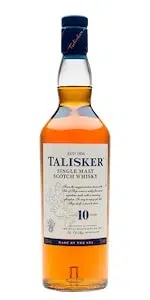
Talisker 10 Years is a Single Malt distilled by the oldest distillery on the Isle of Skye, producing maritime and powerful Single Malt Scotch Whisky since 1830.
Every sip takes you to this remote island. Already in the nose, you can smell the saltiness from the sea. The complex taste, peat-smoke flavor, and peppery finish make Talisker a favorite of many discerned Scotch drinkers.
Typically, Talisker Single Malt mixes exceptionally well with strong black coffee and ginger. But it is also a brilliant choice for a Whisky Sour. It creates a quite complex take on the cocktail with many unusual nuances for this drink.
Try to make it with 1.5 oz of Talisker, 0,75 oz lime juice, 0.5 oz simple syrup, and two dashes of aromatic cocktail bitters. The addition of bitters adds a little complexity which also helps to bring out the distinct flavors of the whisky in this cocktail.
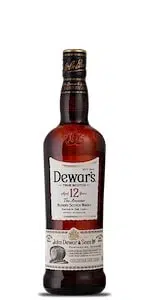
Dewar's is the most awarded blended Scotch in the world. It won more than 500 awards, far more than any other.
Dewar's 12-Year-Old Blended Scotch Whisky is double-aged to ensure its extra smooth consistency. The level of dedication doesn't go unnoticed and convinced even the British royal family. Since 1893, Dewar's has been the royal purveyor of whisky to the court without interruption.
For a Scotch, Dewar's 12 is relatively light on smoke. Some smoky peat flavor is still present but only slightly. Instead, the taste is a little sweet and floral, with a hint of toasted barley and almonds.
If you want to start experimenting with Scotch in your Whiskey Sour, Dewar's 12 is a great option. It brings elegant floral notes to the drink along with hints of smoke that make for an intriguing flavor profile.

Lagavulin 16 is a beautiful Islay Scotch and an absolute smoke bomb. The flavors are very intense and concentrated. When drinking it neat, you get bold peaty smokiness combined with notes of malt and Sherry.
Cocktail recipes rarely call for Lagavulin. However, I find it fantastic in a Whiskey Sour - if you're really into smoky drinks, that is.
To optimally mix a Whisky Sour with Lagavulin 16, best use a split-base approach. That means half of the base should be Lagavulin, the other half another whiskey - I recommend Dewar's 12. This split base helps to balance the strong smoky notes in the drink.
Then, use maple syrup instead of regular simple syrup, an egg white, and two dashes of Angostura bitters. The result is an intriguing and complex Whisky Sour with very pronounced peaty notes. A combination you most likely never had in any Sour Cocktail before.

Teeling is a young, up-and-coming whiskey brand from Dublin, Ireland. It is also currently one of my favorites from the Green Island.
Teeling Small Batch is aged in Rum casks and is famous for its unusual fruity flavors: apples, cherries, oranges, apple pie, chocolate, and hints of fresh-cut grass make this whiskey so unique.
It is a blend made of various whiskeys that have been aged up to six years. Grain and malt whiskeys age separately in former Bourbon barrels and then blended and age again in American Rum casks for a whole year.
When used in a Whiskey Sour, Teeling brings in a lot of fruity flavors that are atypical for a standard Whiskey Sour. This one is a personal favorite and a great choice for everyone who wants to try something new and is not into smoky whisky or rye.

Jameson is one of the most famous Irish Whiskey brands. Their whiskey is made from unmalted and malted barley and matures in former Sherry and Bourbon barrels.
Jameson has a really unique smell with sweet notes of caramel, fruity nuances of apple and vanilla, and wooden notes. While sweet aromas of vanilla, nuts, and caramel dominate the taste, you can also get a hint of sherry.
Jameson's mild and sweet taste makes it the ideal base for a Whiskey Sour. Because it is so smooth, consider increasing the whiskey ratio slightly.
In 1862, Jerry Thomas was the first one to mention the Whiskey Sour recipe in his Bartenders Guide. However, the template for sour cocktails is much older, as its roots date back to the 1700s.
To prevent sailors from scurvy, the crew mixed a spirit (often rum) with lemon or lime juice and water. This concoction tasted great, provided them with vitamin C, and kept them hydrated.
Later the sailors brought the recipe to bars where bartenders twisted the recipe using other base spirits like whiskey, brandy, and gin.
The bartender's secret to making a top Whiskey Sour cocktail consists of 4 parts:
A high-quality whiskey is the main element of the cocktail and heavily influences the flavor profile of a Whiskey Sour cocktail. -It can make or break the drink. There are excellent options in every whiskey category, from bourbon to rye, Scotch, and Irish whiskey.
You don't need to buy the most expensive bottles that aged for an extended time. Aging is important when sipping whiskey neat or when making an Old Fashioned.
For a great Whiskey Sour, you want a flavorful and full-bodied whiskey that brings sweetness, spiciness, or smokiness to your cocktail. Luckily, you can get these kind of whiskeys for as little as $30.
Technically, using egg white in a Whiskey Sour isn't necessary. However, I prefer the frothy and creamy foam egg white creates in sour cocktails, and also bartenders tend to make the cocktail with egg white.
You need to apply the right shaking technique to get a fantastic, thick, and robust foam. That means, performing a vigorous dry shake before shaking your cocktail with ice will create a much better foam.
If you don't want raw egg white in your drinks, use aquafaba instead.
Fresh lemon juice brings bright and citric flavors to the drink and is essential to make a perfect version of a Whiskey Sour. If you prefer a more mellow lemon flavor, try aging lemon juice for a few hours before using it.
To shake up a perfect Whiskey Sour, you need the right balance of sweet and sour. Typically, a regular simple syrup (1 part water to one part sugar) is part of the recipe. In rare cases, rich syrup is used (2 parts sugar to one part water). Rich syrup creates a richer mouthfeel and is also sweeter than regular syrup.
The choice and measurements depend on the whiskey base. Some whiskeys are sweeter than others, using too much rich syrup with a bourbon will most likely make your Whiskey Sour too sweet.
Ingredients:
Instructions:
There are some excellent Whiskey Sour riffs, here are some of our favorites:
Check out our Whiskey Sour recipe for a more detailed look at the various twists.
Choosing the right whiskey for a Whiskey Sour is a matter of personal taste. Some prefer sweeter options like bourbon, others more spicy rye whiskey or smoky Scotch.
My general recommendation is to choose a bold-flavored option with a slightly higher ABV. These higher-proof options contain more flavor to stand up against the acidic lemon juice and sweet notes of sugar syrup.
Now it's time to get your cocktail shaker out and mix some delicious cocktails. Cheers!
You can only produce true Scotch whisky in distilleries on Scottish land. The grain spirit that is primarily known for its occasionally smoky, peaty flavor is primarily made of malted barley. However, other grains like wheat, corn, and rye may also be part of the ingredient list.
Whisky from Scotland comes in various types and styles. These types of Scotch define how the spirit is distilled, which grains producers must use, and how they can blend their products.
The most common types of Scotch Whisky are:
Especially, Single Malt is very well-known. Further, there are three lesser-known sorts:
You can produce each Scotch type in each of the 5 Scotch regions. The resulting spirits may show differences due to different climates and production techniques in these regions.
Now, let's look into the five different types of Scotch. The first is the most popular one, the Single Malt Scotch.
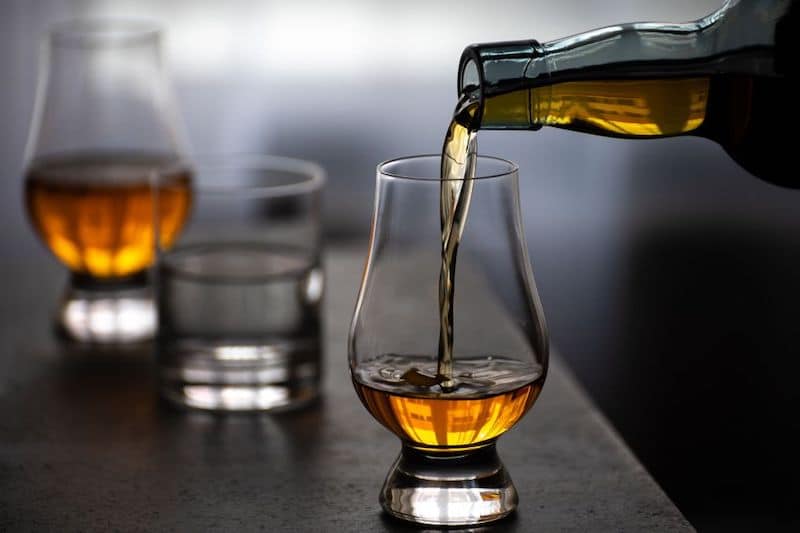
A Single Malt Scotch Whisky is a premium product. The term Single Malt means that this Scotch consists of 100% malted barley and is distilled in pot stills at a single distillery. You may blend it with Whiskies from other casks, but -again- all of them have to come from the same distillery.
Single Malt is considered premium whisky, and people perceive it as superior to blends. That is amplified by the fact that bottles of this type are usually pricier than other whiskies. As a result, people new to Scottish whisky will often buy Single Malt by default- although, when asked, they rarely know why.
In fact, Single Malt Scotch is not automatically smoother, richer, or better than other types. It comes entirely down to personal taste, which you like best.
Recommended Single Malt brands: Macallan, Glenfiddich, Oban, and Ardbeg.
Single Grain Scotch is not as widespread as Single Malt, and only a few distilleries specialize in producing it. It is often lighter and not as complex as malt whiskies and typically used to lend body to Blended Scotch.
The list of ingredients in Single Grain Scotch can include various grains, including barley, wheat, rye, and corn. Similar to a Single Malt, it needs to be distilled at one distillery - hence Single. Yet instead of pot stills, producers usually use column stills for making Single Grain.
Renowned brands that produce Single Grain Scotch: Glendalough and Loch Lomond.

Like Single Malt, Blended Malt Scotch is made from 100% malted barley - hence the term malt. But instead of coming from only one distillery, this type of Scottish whisky is made from products from at least two different distilleries.
In the past, Blended Malt was also known as "vatted" or "pure" malt. These days, it is a rare sight because there's so little demand for blended Malt Scotch.
Analogous to Blended Malt, Blended Grain Scotch is a combination of at least two Single Grain Whiskies from different distilleries. Since Single Grain is already rare, Blended Grain is even rarer.
If you're curious and want to try some out, try the whiskies from The Famous Grouse. This Scotch producer specializes in making excellent blended Scotch products, including Blended Grain, Blended Malt, and Blended Scotch.
Blended Scotch has the loosest regulations of all five variations and is a blend of at least one Single Malt Scotch and one Single Grain Scotch from different distilleries.
This style of Scotch is known for its balanced taste and smoothness.
The flavors of this spirit make it ideal for mixed drinks and Scotch cocktails.
Recommended Blended Scotch whisky brands: Johnny Walker, Dewar's, and Famous Grouse.
When it comes to Scotch whiskey, two main types stand out: Single Malt Scotch and Blended Scotch. While both have distinct characteristics and allure, they offer different experiences to whisky enthusiasts.
As already mentioned, Single Malt Scotch is crafted exclusively from 100% malted barley and must come from a single distillery. These whiskies are renowned for their intensity of flavors, as they are often aged for an extended time, resulting in a fuller and more complex taste profile. Single malts are more expensive due to their limited production and exceptional quality.
On the other hand, Blended Scotch is a harmonious combination of 15-40% single malt scotch and 60-85% grain whiskey, technically known as single grain scotch, which is predominantly made from wheat. Blended scotches are lighter and more affordable to produce, leading to a milder flavor profile that is easier to drink. They are excellent options for mixing into whiskey cocktails due to their versatility and ability to complement other ingredients.
Below is a comparison table highlighting the key differences between Single Malt Scotch and Blended Scotch:
| Aspect | Single Malt Scotch | Blended Scotch |
|---|---|---|
| Ingredients | 100% malted barley from a single distillery | Blend of 15-40% single malt scotch and 60-85% single grain scotch |
| Flavor Profile | Intense, complex, and full-bodied | Milder, better-balanced, and more approachable |
| Ageing | Often aged for longer | Varies depending on components |
| Price | Usually more expensive | Generally more affordable |
| Usage | Enjoyed neat or with a splash of water | Great for mixing into cocktails |
While you may be tempted to view single malts as superior, purer expressions of Scotch, and blends as budget options mainly for mixing, it's essential to appreciate them as distinct styles, each with its own merits.
Single Malt Scotch showcases the singular expression of a distillery, offering a remarkable depth of character, while Blended Scotch masterfully combines different whiskies to achieve balance and versatility. Both have their place in the whisky world, catering to specific preferences and occasions.
Scotch Whisky is known for its diversity in flavors, and you cannot define the taste by the type. Especially, because these differences are only partly due to the production processes. A lot of the variety also is yielded by these regional differences.
For example, when looking for a smoky Scotch with hints of seaweed, suggesting picking a Single Malt or Single Grain won't be helpful. However, recommending a Scotch from Islay (like Lagavulin) will likely get you what you're after. Of course, this doesn't apply to all products from this region, but it's a good rule of thumb.
However, to give you an idea of the taste of the different types, here are a few guidelines:
Scotch is known for its smoky, peaty flavor. However, not every Scotch whisky has this distinct character. The smoky aroma and taste are also not limited to certain Scotch varieties. Instead, it is a step in the malting process before distillation, lending the spirit its smoky note.
The captivating smoky flavor found in peated Scotch is a result of the intricate interplay of various factors during its production. One of the most influential elements is "peat," a type of soil rich in decomposed vegetation found in bogs and wetlands that is young coal.
During the final step in the malting process, barley is dried in a kiln, and sometimes this kiln is fueled with peat, seasoning the smoke that penetrates the barley and imbuing it with a distinct smoky essence. The toasting and distillation process further enhance this smoky profile, creating an enchanting peat flavor that carries all the way to the bottle.
Scotches that incorporate peat are often referred to as "peated" or "peaty." This style originated in Scotland, where peat is a vital fuel source for rural areas for centuries. While peated whiskies are predominantly associated with Scotch, they also exist in regions like Japan, Ireland, and the United States, delighting whisky enthusiasts with their smoky charm.
Since Scotch is a specific type of whiskey, it is not different but has characteristics that make it unique.
Another requirement of Scotch whisky regulations is that the spirit, once bottled, must contain at least 40% ABV. Scotch fresh from the barrels usually holds a lot more alcohol and is watered down in most cases until it reaches an alcohol content of 40% to 45%.
The maturation process of Scotch plays a key role in shaping its distinct flavors, with barrels playing a significant role in this transformation. Approximately 70% of Scotch's flavors are acquired from the barrels used during aging.
Interestingly, unlike other tightly regulated production aspects, Scotch barrel aging offers a wide array of options, making it the most diverse whisky category globally. Scotch must mature for at least three years in oak barrels, and the possibilities for barrel selection are vast.
Over 90% of the Scotch is aged in ex-bourbon barrels, which impart coconut, vanilla, and toffee notes and allow for extended aging without overwhelming oakiness. Another common choice is ex-sherry casks, which bestow rich flavors of dried fruit and a subtle nuttiness.
Additionally, Scotch enthusiasts enjoy the uniqueness of multiple barrel combinations and "finishing" techniques, where rum, port, Madeira, and sherry casks, among others, provide a final layer of complexity.
Scotch can only be made in Scotland, more precisely in one of the following Scotch whisky regions:
Each of these regions has a different climate and soil conditions that result in flavor differences in the final products. Speyside Whiskies, for example, are known for their fruity flavors with notes of apple, pear, honey, and vanilla. The Lowland whiskies, on the other hand, are much smoother with more refined palates and flavors like honeysuckle, cream, ginger, and cinnamon.
The last one on the list, the Islands, is not officially recognized as one of the distinct Scotch regions. However, whisky produced on these islands can, of course, legally be named Scotch.
If you want more details on the popular spirit, read our Scotch Whisky Guide.
Generally, alcoholic beverages are high in calories. A single glass - 1.5 ounces - of Scotch, for instance, ranges between 85 and 124 calories. The higher proof a Scotch is, the higher the number of calories. Compared to soft drinks, this is a lot. Compared to other alcoholic beverages, however, it is low to moderate.
Scotch is a legendary spirit from Scotland, is crafted with passion and precision. Its recipe is simple, relying on grains, mainly malted barley, water, and yeast, all distilled within the mesmerizing landscapes of Scotland. To unlock its full potential, Scotch matures in oak barrels for a minimum of three years. The result is a smooth, rich spirit with an alcohol content below 94.8%. The calories in Scotch highly depends on the alcohol or proof of the respective bottle.
So let's find out how to determine how many calories are in Scotch and how it compares to other kinds of whiskey.
Compared to other alcoholic drinks, a dram of Scotch contains a moderate amount of calories. If you drink it neat, that is.
The amount of calories in whiskey drinks exclusively depends on the alcohol content. The higher the ABV, the more calories Scotch contains. As Scotch does not contain sugar or fat, the ABV is the only factor having a notable impact on the calories.
A serving of 1oz 50% ABV Scotch contains about 80 calories. Lower-proof Scotch has fewer calories. In the chart below, you can check out exactly how many calories your Scotch has per ounce and a shot of whiskey.
| Whiskey Proof* | Calories | |
|---|---|---|
| 1oz - 30ml | 1.5oz - 45ml | |
| 70 | 56 | 85 |
| 80 | 64 | 97 |
| 86 | 70 | 105 |
| 90 | 73 | 110 |
| 94 | 76 | 116 |
| 100 | 82 | 124 |
| *Proof is double amount of abv. 80 proof equals 40% abv | ||
Perhaps you already guessed: the amount of calories does not depend on the type of whiskey but rather on the level of proof. As a rule of thumb, a gram of alcohol has about seven calories.
That means: whiskey with 50% alcohol by volume has 25% more alcohol in grams, thus, also 25% more calories than an alternative with only 40% ABV.
Whatever whiskey you choose, they're all the same in that regard. But don't mix this up with whiskey liqueurs and products like Peanut Butter Whiskey. -A lot of sugar, and with it, quite some extra calories go into the drink.
The situation with Vodka, Gin, or Rum is pretty much the same, by the way. Some have slightly more calories since some Rum and Gin can be a tad bit sweetened, depending on the type. But in the big picture, the difference is negligible.
Somehow calories and carbs or calories and fat are tightly connected in our heads. Spirits like whiskey have neither, so how come they have a higher calorie count than, let's say coke? Four times as many, to be precise...
It's the alcohol itself. For comparison: 1g of fat has 9 kcal, 1g of sugar has "only" 4 kcal, and alcohol sits neatly in between with mentioned 7 kcal per gram of pure alcohol.
If you combine all the above in a whiskey liqueur like Baileys - a mix of fat, sugar, and alcohol - you get one serious calorie bomb with 140kcal per 1.5oz serving.
The best way to keep the number of calories in your Scotch or other whiskey down is to drink it without additional ingredients. - Per standard serving size of the respective drink, not per oz (a neat Scotch has a way smaller size than a Scotch Highball, for instance):
There are some way more sugary ways to enjoy your whiskey that will increase your calorie intake per serving: Scotch Highballs mixed with Tonic Water or Ginger Ale, for example.
If you look at whiskey cocktails like a Whiskey Sour, you increase your calorie intake a lot - for your reference: a standard Whiskey Sour with about 3oz has 173kcal. The cocktail with syrup and lemon juice will make for a sensational drink, though.
That's, unfortunately, a big no. Alcohol consumption, in general, always influences your metabolic rate negatively, so drink moderately or go for non-alcoholic spirit alternatives when on a diet.
Yet, if the choice is not between no alcohol and alcohol but which alcohol, Scotch is a good choice. A regular shot of whisky (1.5 oz) contains between 105 and 123 calories, which is comparably low for alcoholic beverages. As a comparison, an average pint of beer contains 208 calories.
Scotch also doesn't contain any carbohydrates, sugar, or salt. It also doesn't change your blood glucose levels as many other spirits do.
Still, the calories of a serving of Scotch are empty. That means your body cannot use them to create energy. Plus, alcohol also causes an increased appetite.
You might have heard this before, and current research supports the claim: Moderately drinking Scotch or other whiskeys can be beneficial to a healthy lifestyle.
The health benefits of regularly drinking a glass of red wine were proven a long time ago, but there's evidence that a moderate intake of alcohol, can positively affect your heart health. -With a strong emphasis on moderate.
That, however, does not mean you should start drinking alcohol. There are countless other things you can do to improve your health.
It means that drinking responsibly and having a sip of whiskey after a long day is a guilty pleasure you can afford from time to time.
Enjoying a glass of Scotch whisky is a smart choice if you want to savor an alcoholic drink without piling up too many calories. However, remember to drink it in moderation. Alcohol contains "empty" calories, meaning they provide no nutritional value.
Additionally, studies have shown that alcohol can stimulate appetite, making you more prone to overeating and consuming extra calories resulting in weight gain. To maintain a balanced approach and safeguard your well-being, it's best to stick to moderate consumption guidelines – no more than one drink per day for women and no more than two drinks per day for men.
Does it sound absurd to you that someone may feel their drink is ruined because it came in the wrong glass? It certainly is not crazy to many whiskey lovers. And actually, there are valid reasons for the many different styles and shapes of whiskey glasses.
The range goes from classic whiskey tumblers to snifters, and the whiskey experience can vary depending on your choice. So let me explain why there are differences and show you the most common types of whiskey glasses and when to use them:
One quick tip: From clean and elegant tumblers to the fancy NEAT glass; regardless of the design, make sure the whiskey has enough space to swill. Similar to good wine, whiskey needs space to breathe to develop its aroma.
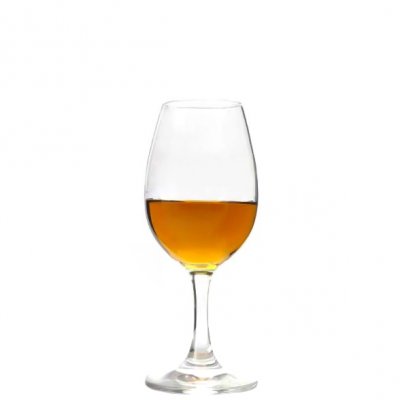
The design of the Copita glass is derived from a traditional Sherry sampling glass. This small, stemmed glass is often used for tasting spirits of all kinds. Thus, many whiskey lovers, master distillers, and blenders choose this kind of glass for tasting their own whiskey.
Holding it at its stem will prevent your hand from being too close to your nose, which otherwise could cause irritations and distort the true aroma of the whiskey.
Further, the bowl of the copita glass is narrow and tall. That concentrates aromas and makes this glass a perfect choice for nosing whiskey. If you're looking for glassware that highlights the nuances of a single malt Whiskey, go for a copita.
This glass is solely for whiskey tasting. Shape-wise, the Glencairn is quite similar to the copita. The main difference is the missing stem and the overall more robust appearance. The glass is shorter and thicker, making it ideal for sociable drinking without worry about breaking it.
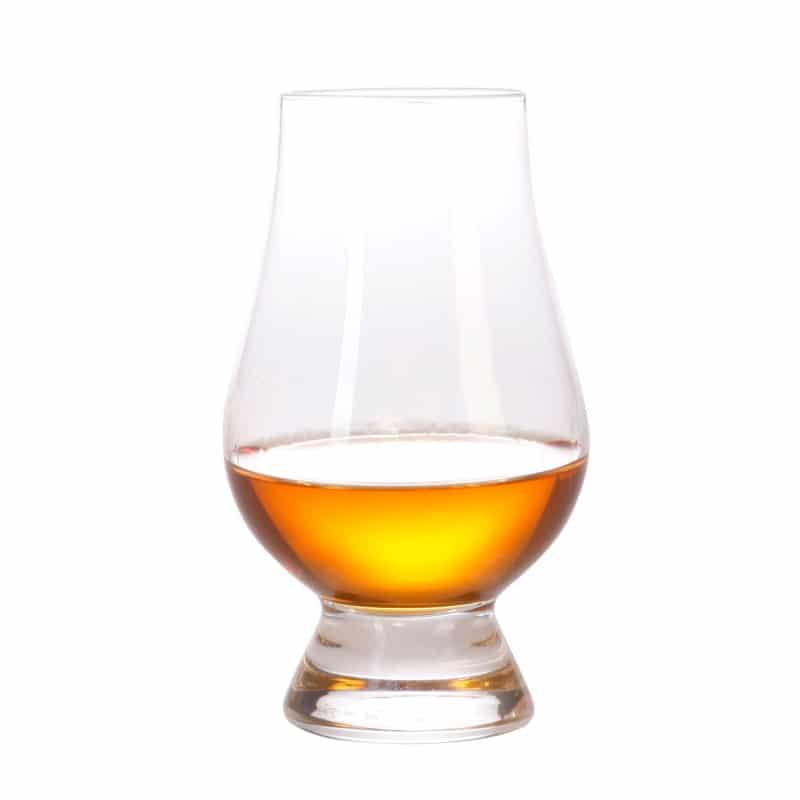
With its small size, the Glencairn makes the perfect glass for swirling your whiskey. That will unfold the aromas in the whiskey, which intensify due to the bowl shape.
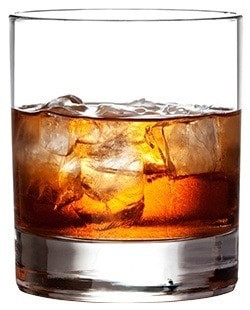
A tumbler is the most common whiskey glass you can find. In movies, you most certainly will see a tumbler somewhere when whiskey is on the menu.
Whiskey in a tumbler usually is served on the rocks. This glass is definitely not for nosing a whiskey, but that is also not its purpose. Other types take care of this aspect.
The wide, cylindric shape allows you to add an extra-large ice sphere or cube. And this is already the main advantage of this glass. It's also commonly used for serving all kinds of spirits on the rocks and drinks like Whiskey Sour.
Wide bottom, narrow top, short stem - that's the snifter, also known as brandy bowl or cognac glass - all mean the same thing.
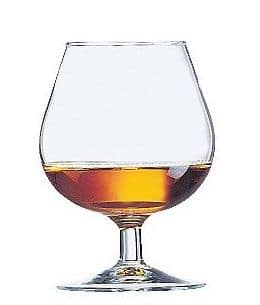
By tasting whiskey in a snifter, you want to show class. That is the kind of glassware you will see in high-class Gentlemen's clubs, where guests sit on Chesterfield sofas and smoke Cuban cigars.
It's perfect for refined, aged, dark spirits like Whiskey, Rum, Brandy, or Cognac. I suggest getting some of them for your home bar.
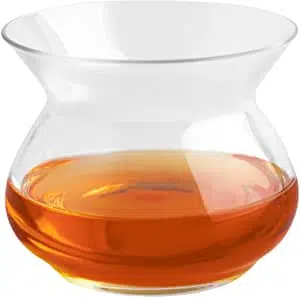
The neat glass is relatively new and offers an intriguing feature. Its shape prevents harsh notes of alcohol from getting to your nose.
In this context, "NEAT" is short for Naturally Engineered Aroma Technology. The way it works is that the build of the glass lets lighter molecules out but keeps the heavier ones in the whiskey. It's a fun way to drink whiskey. However, it takes some time to get used to due to its unconventional shape.
There are multiple reasons why some types of whiskey glasses have a thick bottom. Besides the apparent effects on durability and stability, there is more behind it:
One point is that the bottom of a whiskey glass helps maintain temperature. Changes in temperature can have enormous effects on the taste of whiskey. So significant that some people would never drink their whiskey on the rocks as they consider it a waste of money. Now, no matter the temperature you want your whiskey to have, you will want to keep it at the same level for as long as possible.
The second reason is more related to functionality in the early days of cocktails. When Old Fashioned cocktails were trending, the thick bottom was essential.
It is perfect for muddling ingredients inside the glass. For instance, when you wanted to create an Old Fashioned, you muddled the sugar cube drenched in aromatic bitters before adding the spirit.
How can the choice of whiskey glass possibly make a difference to your drinking experience?
Like every quality spirit, whiskey needs space and temperature to unfold its full aroma. You need to be able to smell and taste the different nuances.
The shape and design of whiskey glasses can support this in different ways. For instance, some glassware is designed to concentrate the vapor and pronounce the smell of the whiskey, while other designs take away the harsh aromas of their content simply by their shape.
So the answer is: yes, glasses can make a difference if you care about details and nuances.
When bartender Todd Smith invented the Black Manhattan recipe in 2005, he adjusted the old recipe by changing one main thing: he used Amaro Averna instead of Sweet Vermouth.
His Black Manhattan is rich in taste, slightly boozier, a bit heavier than the original recipe, but also more flavorful. The subtle notes of licorice, juniper, sage, and rosemary make the cocktail special. -A delight for every Manhattan lover.
Quick Facts Black Manhattan Cocktail
A simple twist on the original. But an effective one. The addition of Amaro makes the cocktail more complex, with a lot more herbal bitterness.

The black variation of the classic Manhattan not only swaps in Amaro Averna for Sweet Vermouth. Todd Smith also added extra cocktail bitters. So here's the list of ingredients for a Black Manhattan cocktail, including the classy garnish:
By the way, if you don't have Averna at home and can't find it in a store, you can replace it with a similar Amaro. Ramazzotti and Amaro Meletti are great substitutes for Amaro Averna. But if you have neither, there are some more options. Here you can find the best substitutes for Averna.
The traditional recipe uses regular Angostura Aromatic Bitters to add depth to the cocktail. In this Black Manhattan variation, Amaro Averna adds another complex layer of flavor, rounded off beautifully with the help of orange cocktail bitters.
For orange cocktail bitters, there are some superb choices available. I recommend using Angostura orange bitters or Regan's orange bitters No.6. Both are premium quality and bring a delicate fruity orange flavor to the drink.

The Black Manhatten consists of alcoholic ingredients only and, as such, is prepared in a mixing glass and served without ice - straight up. Two things are important here:
For the first part, make sure you fill your mixing glass with plenty of ice cubes. Then stir for 20 to 25 seconds to chill the drink and water it down just enough. That also will help with the second because, after 20 seconds, the content of your mixing glass will be nice and cool.
For further help with the second, put your glass in the freezer or cool it by filling it with ice cubes while mixing. Remove the ice and the water before pouring. Plus, use a vessel with a stem so you don't warm the Black Manhattan with your hand while sipping it.
As I mentioned, the Black Manhattan was invented by bartender Todd Smith back in 2005. He has created this flavorful twist on the original Manhattan while working at Bourbon & Branch, his 1920s-style cocktail bar in San Francisco.
It didn't take long for the rich and bittersweet variation to gain fans all around the globe. The distinct herbal notes and the slight spiciness of Smith's version made the cocktail an instant modern classic.
If you like to experiment with the vintage classics, how about trying one of these recipes:
Just by reading the name, you might already suspect that the Dying Bastard is a riff off the Suffering Bastard. It's a low-ABV cocktail with a beautiful spicy note from ginger beer.
Quick Facts Dying Bastard Cocktail
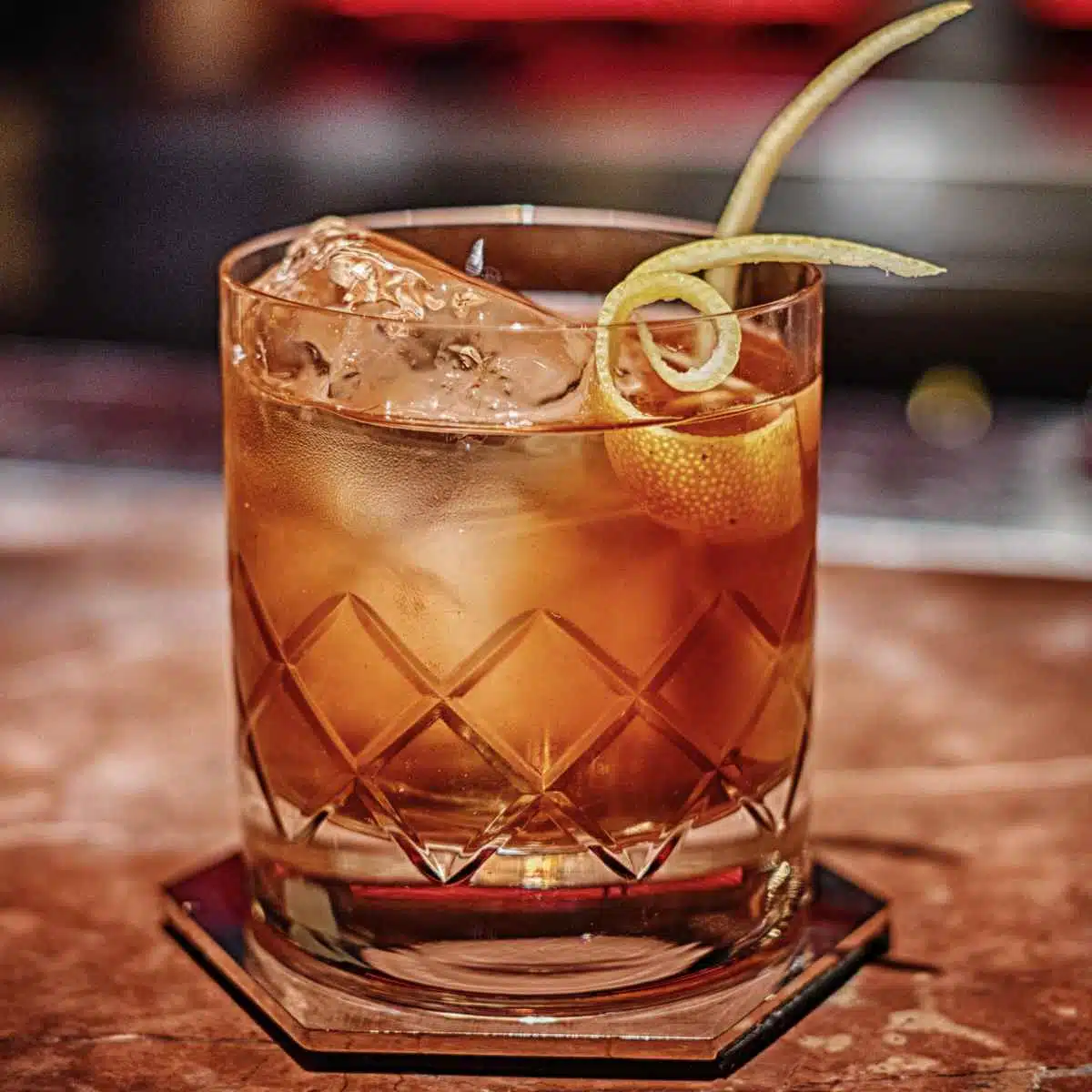
The recipe for making a Dying Bastard cocktail calls for three different types of spirits but is well-balanced by ginger beer and lime:
Serve the cocktail in a tall glass - a Collins or Highball glass are both excellent choices.
Fill the glass with large ice cubes or a Collins Stick. Since the drink has a low alcohol content, you don't want the ice to melt as slowly as possible to avoid further dilution. The larger and less "polluted" the ice, the slower it melts.
Mix all ingredients except the ginger beer in a cocktail shaker. Since ginger beer is carbonated, you should not shake it. You only add it after you poured the spirit and lime mix into the glass.
The two renowned variations of the Dying Bastard are the Dead Bastard and the Suffering Bastard. Well, actually, the Dying Bastard is a variation of the latter, not the other way around.
The three recipes follow the logical order: Suffering - Dying - Dead. The first has a base of gin and bourbon, the second adds brandy, and the third variation adds rum to the list of ingredients. All three are made with ginger beer and lime.
The recipe was developed by Joe Scialom in the 1940s while working at the Shepheards Hotel in Cairo. He came up with the concoction when he tried to find a way to cure the hangovers of British soldiers during WWII.
The history of the Dying Bastard and its two related cocktails was long unclear until Jeff Beachbum Berry, a Tiki cocktail historian, set out to find the inventor and met Scialom's daughter Colette to learn more about the origin of these drinks. [1]
As the name suggests, Scotch is a special kind of whiskey that can only be produced in Scotland. - In one of the 5 (+1) Scotch-producing regions, to be precise, with each standing for particular flavors and styles of Scotch Whisky.
These recognized Scotch regions are
Besides those, there is one more unofficial region: the Islands.
So let's get into the details - and don't confuse these styles with the different Scotch types, which give you information about the mash bill, the production, and the blend instead.
Of all the Scotch-producing districts, Speyside is by far the most important one, so we start with that:
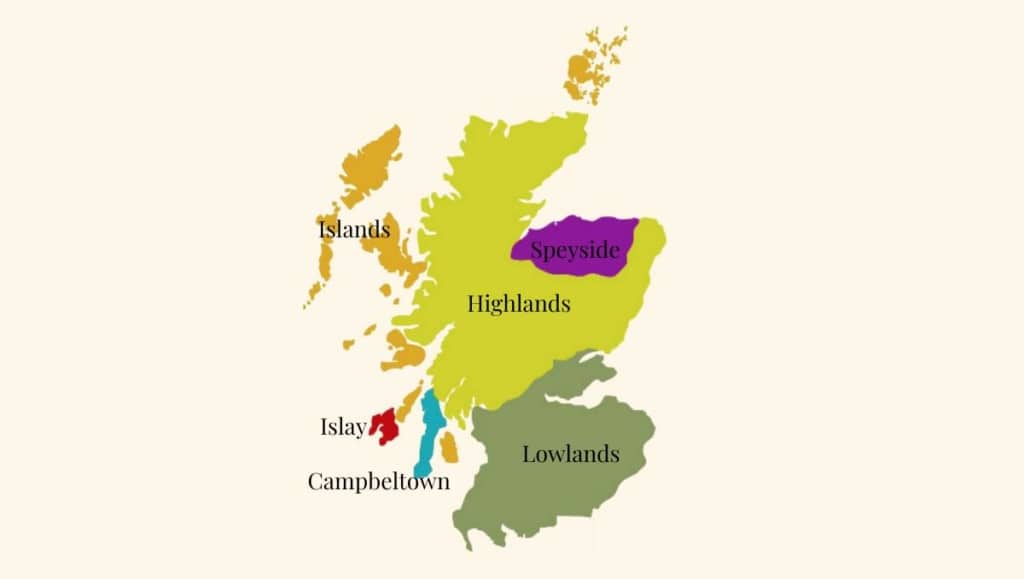
Speyside is located in the northeastern part of Scotland and originally was a subregion of the Highlands. However, due to the high density of distilleries, it's now a separate region.
It is home to more than 60 distilleries, which equals more than 50% of the country's total - both, in terms of facilities and production volume.
Generally, it is known for its sweeter Single Malt Scotch with only a little peat. Typical flavors include apple, vanilla, oak, and dried fruit.
Speyside has also brought up some of the most renowned Scotch brands in the world, such as Glenfiddich, Macallan, Dalwhinnie, Glenlivet, and Glenfiddich.
Geographically, the Highlands is the largest whisky-producing area in Scotland, and it encompasses more than 25 distilleries, which make up another 25% of the country's whisky production.
Because it is such a large area, it is divided into four sub-areas North, East, South, and West. Each of these areas has its very own characteristic flavor.
The most influential distilleries in these regions are:
Highland Whiskies are famous for flavors like fruit cake, malt, heather, and smoke. Especially Dalmore and Glenmorangie are known for their excellent, full-bodied Single Malt Whisky.
The northern part is famous for the bold Single Malt Scotch. Scotch from the eastern Highlands is usually milder and more fruity in taste.
The southern part produces similarly fruity Scotches with an even lighter body. And finally, the western part is known for its peated Single Malts with Oban being the most popular brand representing it.
The Lowlands are the second largest area to produce Scotch Whisky. Yet, is home to only five distilleries.
Scotch from the Lowlands is known to be mild in taste with no peaty flavors. Instead, Lowland Whisky contains flavors like toffee, cream, honeysuckle, and cinnamon.
The most popular brands producing Scotch in the Lowlands are Auchentoshan and Glenkinchie.
Islay Scotch is best known for its smoky flavor and hints of saltiness. The region is located just west of the Scottish mainland and is the smallest region to produce Scotch.
However, Islay Scotch is world-renowned and home to some of the most famous brands like Ardbeg, Lagavulin, and Laphroaig.
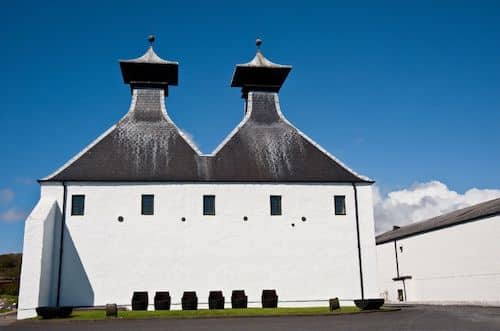
All the above are known for producing excellent peated Single Malts with a typical Islay touch. So expect some seriously smoky notes from Islay Scotch.
All the above are known for producing excellent peated Single Malts with a typical Islay touch. The high level of smoke in the flavor profile makes Islay Scotch not the most approachable for whisky beginners. If you want to get you used to it slowly, try mixing it in Scotch cocktails to mute the peaty flavors slightly.
Campbeltown once was a thriving whisky-producing area counting more than 30 Whisky distilleries. But these times are long gone, and today, you will only find three left:
One is Glengyle, bottling their whisky under the label Kilkerran, Glen Scotia, and Springbank.
Campbeltown Whisky is known for its dryness and flavors like brine, toffee, vanilla, and dried fruit.
Besides these five official regions, there are various small islands harboring distilleries.
The Islands are enormously diverse but not an area recognized by the Scotch Whisky Association. Still, they are home to some famous Scotch brands.
For instance, Talisker (Isle of Skye), Highland Park (Orkney), and Jura (Isle of Jura) are each located on one of these over 800 small islands.
Scotch Whisky is a distilled spirit that must contain malted barley. Some types are made from 100% barley, while others include additional grains.
Scotch differs from other types of whiskey in its mash bill, the country of origin, the flavor - often quite peaty- and the spelling. You may have noticed that Scotch Whisky is spelled without the e - read more on the reasons behind that in our article on whisky vs. whiskey.
Further noteworthy is that there are five different types of Scotch: Single Malt, Single Grain, Blended Malt, Blended Grain, and Blended Scotch. This classification tells you about the mash bill (malt or grain), the blending type, and they indicate the production process.